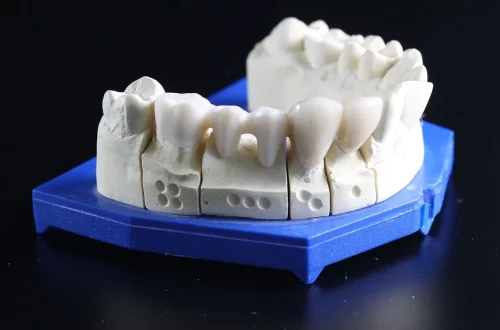
Understanding Why Your Dog Is Breathing Fast and What to Do
Understanding why your dog is breathing fast can be concerning for any pet owner. Rapid breathing, or tachypnea, can occur for various reasons, some of which may be benign while others might indicate a more serious health issue. As a dedicated dog owner, it’s crucial to be observant and informed about your furry friend’s well-being. Dogs cannot communicate their discomfort as humans do, making it essential for owners to recognize signs that may indicate a need for attention.
Breathing is a vital function for all living beings, and changes in your dog’s breath can signify a range of conditions, from excitement and anxiety to physical ailments. Factors such as heat, exercise, and emotional states can all contribute to changes in your dog’s respiratory rate. However, if you notice that your dog’s breathing remains fast even at rest, it could be a sign of underlying health issues that may require veterinary consultation. Understanding the reasons behind fast breathing can help you determine the best course of action to take for your beloved pet.
In this article, we will delve deeper into the various aspects of rapid dog breathing, helping you navigate this important facet of pet care.
Common Causes of Rapid Breathing in Dogs
There are numerous reasons why your dog may be breathing rapidly. One of the most frequent causes is heightened excitement or anxiety. Dogs often breathe faster when they are excited, whether it’s from playing, meeting new people, or even during car rides. This type of rapid breathing is typically temporary and should return to normal once the stimulus is removed or the dog calms down.
Another common cause of fast breathing is heat. Dogs do not sweat like humans; instead, they pant to regulate their body temperature. If your dog is panting heavily after a walk or during a hot day, it may be trying to cool itself down. It’s essential to ensure your dog has access to water and shade to prevent overheating, which can lead to heatstroke.
However, rapid breathing can also indicate medical conditions. Conditions such as respiratory infections, allergies, or even heart problems can lead to tachypnea. If your dog exhibits other symptoms, such as coughing, lethargy, or a change in appetite, it is advisable to consult your veterinarian. Early detection of health issues can lead to more effective treatment and a better prognosis.
In some cases, pain can also cause rapid breathing. Dogs may breathe quickly if they are experiencing discomfort from injuries or internal issues. If you suspect your dog is in pain, it’s crucial to seek veterinary help promptly.
Identifying Signs of Distress in Your Dog
While rapid breathing can sometimes be a normal reaction to certain stimuli, it can also be a sign of distress. Observing your dog’s overall behavior is vital in understanding whether their rapid breathing is a cause for concern.
Look for accompanying signs that may indicate your dog is in distress. These can include excessive panting, pacing, whining, or hiding. If your dog seems anxious and is breathing rapidly, it may be reacting to stressors in its environment. Changes in their surroundings, such as new pets, loud noises, or even changes in your routine, can affect their emotional state.
Monitor your dog’s body language as well. A dog that is panting heavily but seems relaxed and happy might simply be excited, while a dog that is breathing rapidly and appears tense or restless may be experiencing anxiety or discomfort.
It’s also essential to keep track of your dog’s breathing patterns. Normal resting respiratory rates for dogs can vary by size, but generally, a rate of 10 to 30 breaths per minute is considered normal. If your dog is consistently exceeding this range, especially when at rest, it may indicate a health issue that requires further investigation.
In cases where your dog displays severe signs of distress, such as difficulty breathing, blue-tinged gums, or collapse, immediate veterinary attention is necessary. These symptoms can indicate life-threatening conditions, and prompt action is crucial.
What to Do When Your Dog is Breathing Rapidly
If you notice your dog breathing rapidly, the first step is to assess the situation calmly. Try to determine the potential cause of the rapid breathing. If your dog has just engaged in intense play or has been exposed to heat, allow them to cool down and rest. Offering fresh water can also help them rehydrate and regulate their body temperature.
If your dog’s rapid breathing persists, it is essential to monitor for other symptoms. Keep an eye out for coughing, lethargy, or changes in appetite. If any of these symptoms accompany the rapid breathing, it may indicate a need for veterinary evaluation.
Creating a calm environment can also help reduce your dog’s anxiety. If you suspect that stress or excitement is the cause, consider providing a quiet space where your dog can relax. Soft music or a cozy bed can create a soothing environment.
Should your dog show signs of pain or distress, do not hesitate to contact your veterinarian. They can perform a thorough examination and may recommend diagnostic tests to determine the underlying cause of the rapid breathing. Early intervention is key in managing any potential health issues.
In cases where your dog has a known medical condition, such as asthma or heart disease, follow your veterinarian’s guidance closely. Be vigilant about monitoring their breathing and overall health, and ensure they receive regular check-ups to manage their condition effectively.
When to Seek Veterinary Help
Understanding when to seek veterinary help is critical for your dog’s health. If your dog experiences rapid breathing that is persistent or accompanied by other concerning symptoms, it is time to consult with a veterinarian.
Signs that warrant immediate attention include difficulty breathing, excessive panting that does not subside, blue-tinged gums, and signs of lethargy or weakness. These symptoms can indicate serious conditions such as pneumonia, congestive heart failure, or severe allergic reactions.
Even if your dog’s rapid breathing seems to coincide with a specific situation, such as a stressful event or hot weather, it’s essential to err on the side of caution. If the rapid breathing continues beyond what you consider normal for the situation, a veterinary visit is advisable.
Additionally, if you have any doubts or concerns about your dog’s health, do not hesitate to reach out to your veterinarian. They can provide insights based on your dog’s medical history and current condition, guiding you on the best next steps.
In conclusion, being attentive to your dog’s breathing patterns can help you identify potential health issues early on. While rapid breathing can sometimes be a normal physiological response, it can also signify underlying problems that require attention. Always prioritize your dog’s health and well-being by seeking veterinary advice when necessary.
**Disclaimer:** This article is for informational purposes only and is not a substitute for professional veterinary advice. If you have any concerns about your dog’s health, please consult your veterinarian for appropriate guidance and care.




